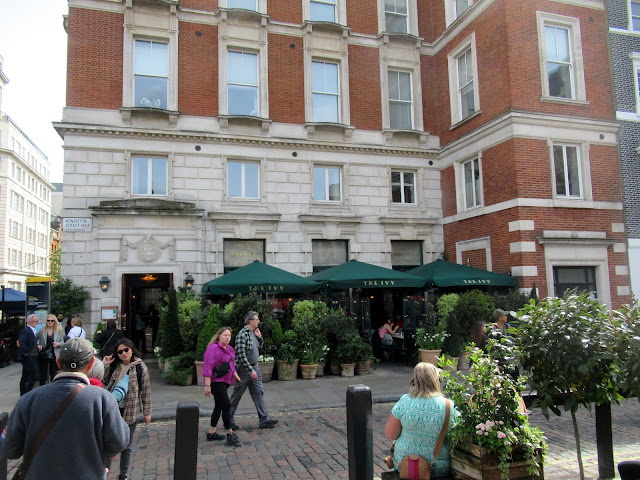
we came across this very interesting little street, Cecil Court, and I started snapping as I wanted to remember this loveliness, hidden in the middle of London that I had not come across before. It's full of art galleries and interesting bookshops. A real treat.
The bookshops here are also very interesting
This one sells predominantly books on witchcraft
The central square is simply called Covent Garden, often marketed as Covent Garden Piazza to distinguish it from the eponymous surrounding area. Designed and laid out in 1630, it was the first modern square in London - originally a flat, open space or piazza with low railings. From about 1635 onwards there were many private residents of note living in the Great Piazza. A casual market started on the south side, and by 1830 the present market hall had been built.
The square was originally laid out when the 4th Earl of Bedford, Francis Russell, commissioned Inigo Jones to design and build a church and three terraces of fine houses around the site of a former walled garden belonging to Westminster Abbey. Jones' design was informed by his knowledge of modern town planning in Europe, particularly Piazza d'Arme, in Leghorn, Tuscany; Piazza San Marco in Venice; Piazza Santissima Annunziata in Florence; and the Place des Vosges in Paris. The centre piece of the project was the large square, the concept of which was new to London, and this had a significant influence on modern town planning as the metropolis grew, acting as the prototype for the design of new estates, such as the Ladbroke Estate and the Grosvenor Estate.
Before entering the market itself, we had another look at the street entertainment which was happening in front of the church of St Paul. The church was the first building and was begun in July 1631.
The church was damaged by fire in 1795. The columns are thought to be original but the rest is mostly Georgian or Victorian reconstruction.
The stalls sells mostly crafty things
The space is popular with street performers, who audition with the site's owners for allocated slots in a number of venues around the market, including the North Hall, West Piazza, the South Hall Courtyard. There are street performers every day of the year except Christmas day. Shows run throughout the day and are about 30 minutes in length.
Street entertainment at Covent Garden was noted in Samyel Pepy's diary in 1662, when he recorded the first mention of a Punch and Judy show in Britain. Impromptu performances of song and swimming were given by local celebrity William Cussans in the 18th century.
looked down at the courtyard space which is full of eateries
quite often, opera.
We chose Ave Mario
because of this we were led to one of the back rooms
as well as other religious artefacts
I discovered another dining room where the kitchen was also, when I went down to the basement to visit the toilet
































































No comments:
Post a Comment